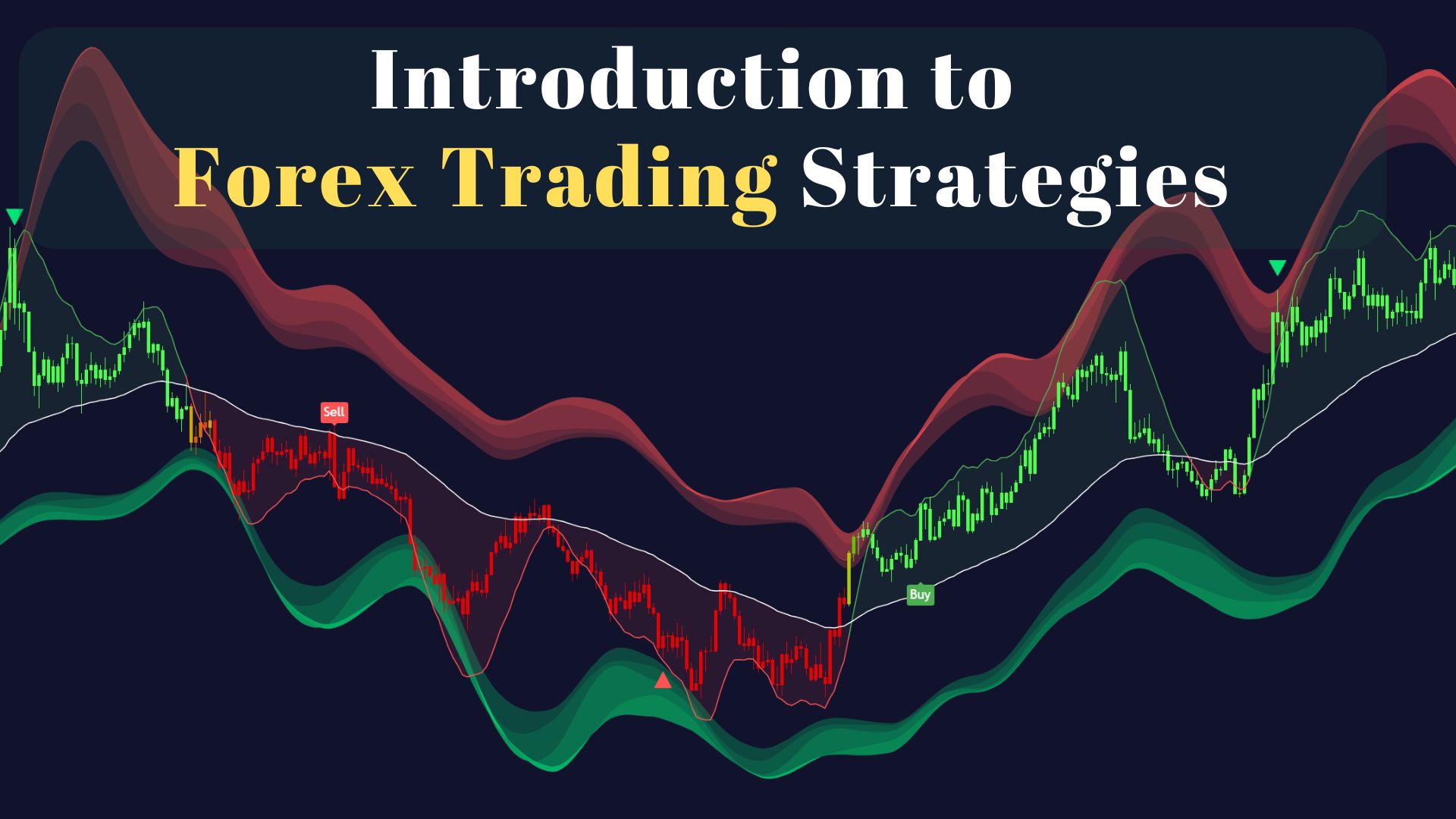Introduction to Forex Trading Strategies
Brief overview of forex trading and its importance
Forex trading, short for foreign exchange trading, involves the buying and selling of currencies on the global market. It’s a crucial component of the financial system, facilitating international trade and investment by allowing businesses and individuals to exchange one currency for another. The forex market operates 24/5, reflecting the constant flow of capital across borders.
One of the key aspects of forex trading is its liquidity, meaning there’s a high volume of trading activity, making it easier to enter and exit positions. This liquidity is beneficial for traders as it reduces the risk of price manipulation and ensures fair pricing. Additionally, the forex market offers a wide range of currency pairs to trade, providing ample opportunities for diversification and risk management.
Forex trading plays a vital role in the global economy by enabling businesses to hedge against currency fluctuations. For example, a company that imports goods from another country can use forex trading to lock in a favorable exchange rate, protecting itself from potential losses due to currency depreciation. Similarly, investors can use forex trading to speculate on currency movements and potentially profit from market fluctuations.
Explanation of why having a strategy is crucial for success
Having a strategy is crucial for success in any endeavor, including forex trading, for several reasons. First and foremost, a strategy provides a clear roadmap and direction for achieving specific goals. In forex trading, this could mean setting profit targets, risk management guidelines, and entry/exit rules based on thorough analysis and research.
Secondly, a well-defined strategy helps traders remain disciplined and consistent in their approach. It prevents emotional decision-making, which can lead to impulsive trades and losses. By sticking to a strategy, traders can avoid chasing trends or making rash decisions based on fear or greed. Moreover, a strategy allows traders to evaluate their performance objectively. By tracking results against predefined metrics, traders can identify what’s working well and what needs improvement. This data-driven approach enables continuous learning and refinement of trading techniques.
Another key benefit of having a strategy is risk management. A good strategy includes measures to protect capital, such as setting stop-loss orders and implementing proper position sizing. This helps in preserving capital during losing streaks and avoiding catastrophic losses.
Furthermore, a strategy provides a framework for adapting to changing market conditions. The forex market is dynamic, with prices influenced by various factors like economic data, geopolitical events, and market sentiment. A flexible strategy allows traders to adjust their approach based on market trends and new information.

Understanding Forex Trading Basics
Explanation of key forex trading concepts for beginners
For beginners in forex trading, understanding key concepts is crucial for building a solid foundation. Here are some essential concepts explained:
Currency Pairs: In forex trading, currencies are traded in pairs, such as EUR/USD or GBP/JPY. The first currency in the pair is the base currency, and the second is the quote currency. The exchange rate tells you how much of the quote currency you need to buy one unit of the base currency.
Leverage: Leverage allows traders to control larger positions with a smaller amount of capital. For example, with a leverage of 1:100, you can control a position worth $100,000 with just $1,000 of your own capital. While leverage magnifies profits, it also increases the risk of losses, so it should be used cautiously.
Bid and Ask Price: The bid price is the price at which you can sell a currency pair, while the ask price is the price at which you can buy. The difference between the bid and ask price is called the spread, which is the cost of the trade.
Pip: A pip is the smallest unit of price movement in forex trading. Most currency pairs are quoted to four decimal places, so a movement of 0.0001 is one pip. For JPY pairs, a pip is represented by two decimal places.
Lot Size: Lot size refers to the volume of a trade. Standard lots are typically 100,000 units of the base currency, while mini lots are 10,000 units and micro lots are 1,000 units. The lot size you choose determines the value of each pip movement.
Margin and Margin Call: Margin is the amount of money required to open a leveraged position. It’s a percentage of the total trade value. A margin call occurs when your account equity falls below the required margin level, and it prompts you to either add more funds or close some positions to avoid further losses.
Risk Management: This involves strategies to protect your capital and manage potential losses. Common risk management techniques include setting stop-loss orders to limit losses on trades, using proper position sizing, and avoiding over-leveraging.
Technical and Fundamental Analysis: Technical analysis involves studying price charts and using indicators to identify potential trade opportunities based on historical price movements. Fundamental analysis, on the other hand, focuses on economic and geopolitical factors that influence currency values, such as interest rates, GDP growth, and geopolitical events.
Introduction to currency pairs, pips, and leverage
In forex trading, currency pairs are fundamental concepts that form the basis of all transactions. A currency pair consists of two currencies, where one currency is quoted against the other. For example, in the EUR/USD pair, the euro is the base currency, and the US dollar is the quote currency. Understanding currency pairs is essential because it determines how currency values are compared and traded in the forex market.
Pips, short for “percentage in point” or “price interest point,” are units used to measure price movements in forex trading. Most currency pairs are quoted to four decimal places, with the pip representing the smallest price increment. For example, if the EUR/USD pair moves from 1.2000 to 1.2001, it has moved one pip. Pips are crucial because they help traders assess potential profits or losses in their trades and determine the cost of trading, known as the spread.
Leverage is another important concept in forex trading that allows traders to control larger positions with a smaller amount of capital. It is expressed as a ratio, such as 1:50 or 1:100, indicating how much larger a position can be relative to the trader’s invested capital. For instance, with a leverage of 1:100, a trader can control a position worth $100,000 with just $1,000 of their own capital. Leverage magnifies both profits and losses, making it a powerful tool but also one that requires careful risk management.
Importance of risk management in forex trading
Risk management is a fundamental aspect of forex trading that can significantly impact a trader’s success and longevity in the market. It encompasses a range of strategies and techniques aimed at protecting capital, minimizing losses, and maximizing potential profits. Understanding the importance of risk management is crucial for forex traders, especially beginners, as it helps them navigate the complexities of the market with a disciplined and strategic approach.
One of the primary reasons why risk management is vital in forex trading is its role in capital preservation. Forex markets can be highly volatile, with prices fluctuating rapidly in response to economic data, geopolitical events, and market sentiment. Without proper risk management, traders expose themselves to the risk of significant losses that can deplete their trading accounts. By implementing risk management strategies such as setting stop-loss orders and using proper position sizing, traders can limit their potential losses and protect their capital from excessive risk exposure.
Moreover, risk management promotes consistency in trading performance. Emotional decision-making, such as trading based on fear or greed, can lead to impulsive and irrational trades that result in losses. A structured risk management plan helps traders stay disciplined and adhere to their trading strategy, reducing the likelihood of making emotional decisions that can negatively impact their results. Consistency in trading performance is key to long-term success in forex trading, and effective risk management plays a crucial role in achieving this consistency.
Another significant benefit of risk management is its contribution to overall portfolio stability. Diversification is a key principle of risk management, and forex traders can diversify their portfolios by trading multiple currency pairs and incorporating different trading strategies. By spreading risk across various assets and markets, traders can reduce the impact of adverse movements in any single trade or currency pair on their overall portfolio. This diversification helps in maintaining portfolio stability and mitigating the potential impact of market volatility.
Furthermore, risk management allows traders to maintain a clear and objective perspective on their trading activities. By defining risk tolerance levels, setting realistic profit targets, and evaluating risk-to-reward ratios, traders can make informed decisions based on data and analysis rather than emotions or impulses. This data-driven approach fosters a deeper understanding of market dynamics and helps traders identify and capitalize on profitable opportunities while managing risk effectively.
In addition to protecting capital and promoting consistency, risk management also contributes to long-term sustainability in forex trading. Successful traders recognize that losses are inevitable in trading, but it’s the ability to manage and control those losses that sets them apart. By implementing robust risk management strategies and continuously evaluating and adjusting their risk management approach, traders can adapt to changing market conditions, minimize drawdowns, and sustain profitability over the long term.

Forex Trading Strategies for Beginners
Overview of simple yet effective forex trading strategies
Effective forex trading strategies are crucial for traders looking to achieve consistent profits in the dynamic and competitive forex market. While there are numerous complex trading strategies and techniques available, simplicity often proves to be more effective, especially for beginner and intermediate traders. Simple yet effective forex trading strategies focus on key principles such as trend identification, risk management, and disciplined execution. Let’s explore some of these strategies in detail.
Trend Following Strategy:
One of the simplest and most effective strategies in forex trading is trend following. This strategy involves identifying the direction of the prevailing trend and trading in alignment with that trend. Traders can use technical indicators such as moving averages or trendlines to identify trends. For example, in an uptrend, traders look for opportunities to buy near support levels or on pullbacks, while in a downtrend, they look for opportunities to sell near resistance levels or on rallies. The key to success with this strategy is to avoid counter-trend trades and to ride the trend until there are clear signs of a reversal.
Breakout Strategy:
The breakout strategy focuses on trading significant price breakouts from consolidation or range-bound markets. Traders identify key support and resistance levels and wait for the price to break decisively above resistance (in an uptrend) or below support (in a downtrend). This breakout often indicates a potential continuation of the trend or the start of a new trend. Traders can use indicators like the Average True Range (ATR) to gauge the strength of the breakout and set appropriate stop-loss and take-profit levels.
Support and Resistance Strategy:
Support and resistance levels are areas on the price chart where the price has historically struggled to move beyond (resistance) or has found buying interest (support). The support and resistance strategy involves buying near support levels and selling near resistance levels. Traders can use price action analysis, chart patterns like double tops/bottoms, or Fibonacci retracement levels to identify these key levels. By entering trades at these strategic points, traders aim to capitalize on potential reversals or trend continuations.
Risk Management Strategy:
Effective risk management is a critical component of any forex trading strategy. This strategy focuses on preserving capital and minimizing losses. Traders can use techniques such as setting stop-loss orders to limit potential losses on each trade. The risk-reward ratio is also an essential consideration, where traders aim for a higher potential reward relative to the risk taken on each trade. For example, a trader may set a stop-loss at 1% of their trading account balance while targeting a 2% profit, creating a favorable risk-reward ratio.
Simple Moving Average (SMA) Crossover Strategy:
The SMA crossover strategy is based on the intersection of two simple moving averages with different periods, such as a 50-period SMA and a 200-period SMA. When the shorter-term SMA crosses above the longer-term SMA, it signals a potential uptrend, and traders may look for buying opportunities. Conversely, when the shorter-term SMA crosses below the longer-term SMA, it indicates a potential downtrend, and traders may consider selling opportunities. This strategy helps traders identify trend reversals and potential entry points.
Explanation of strategies suitable for beginners
New traders can benefit significantly from simple yet effective forex trading strategies. The trend following strategy helps them trade in the direction of prevailing market trends, reducing decision-making complexity and boosting confidence as they align with established market movements. The support and resistance strategy provides clear entry and exit points based on key price levels, aiding new traders in understanding market dynamics and making informed trading decisions. Breakout trading allows new traders to catch significant price movements early, capitalizing on potential trend reversals and riding strong market momentum. The simple moving average (SMA) crossover strategy offers clear signals for identifying trend reversals and entry points, guiding new traders in making timely and informed trades. Additionally, implementing effective risk management strategies such as setting stop-loss orders and using proper position sizing helps new traders protect their capital, minimize losses, and stay in the market longer to gain experience and improve their trading skills. Overall, these strategies provide new traders with structured approaches, clear decision-making points, and risk management techniques essential for success in the forex market.
Emphasis on risk management and capital preservation
Emphasizing risk management and capital preservation is crucial for traders, especially beginners, in the forex market. Risk management strategies such as setting stop-loss orders, using proper position sizing, and avoiding over-leveraging are essential tools to protect trading capital and minimize potential losses. By implementing risk management techniques, traders can ensure that individual trades do not excessively impact their overall account balance, allowing them to stay in the market longer and weather market fluctuations. Capital preservation focuses on safeguarding the initial investment, ensuring that traders have sufficient funds to continue trading and learning from their experiences. It also enables traders to manage emotions effectively, as the fear of losing large amounts of capital can lead to impulsive and irrational decisions. Moreover, a strong emphasis on risk management and capital preservation fosters discipline and responsible trading practices, contributing to long-term success and sustainability in the forex market.
Effective Forex Trading Strategies
Detailed breakdown of five proven strategies
Each strategy explained with examples and charts
Highlighting their effectiveness and suitability for beginners
Best Forex Strategy for Consistent Profits
In-depth analysis of a strategy designed for consistent gains
Day trading in the forex market involves buying and selling currency pairs within the same trading day, aiming to profit from short-term price fluctuations. It requires quick decision-making, technical analysis skills, and a solid understanding of market dynamics. Traders often use technical indicators, chart patterns, and volume analysis to identify entry and exit points for trades. Day traders typically focus on highly liquid currency pairs with tight spreads and high volatility, such as EUR/USD or GBP/USD. Risk management is crucial in day trading, with traders using stop-loss orders and proper position sizing to limit losses. Day trading can offer opportunities for quick profits but also carries increased risk due to market volatility and rapid price movements. It requires discipline, a well-defined strategy, and the ability to adapt to changing market conditions.
Discussion on risk-reward ratios and win rates
Intraday trading strategies revolve around quick trades executed within a single trading day, aiming to profit from short-term price movements. Scalping involves rapid trades capturing small price fluctuations, while day trading exploits intraday trends using technical analysis tools. Breakout strategies capitalize on significant price movements, while trend-following strategies ride prevailing market trends. Range trading operates within defined price ranges, and mean reversion strategies bet on price corrections to averages. Successful intraday trading demands discipline, risk management, and adaptability to changing market conditions, with traders often combining strategies based on liquidity, volatility, and trading costs for optimal results.
Tips on implementing the strategy effectively
Managing emotions and maintaining discipline are crucial for successful trading. First, set clear trading goals and stick to a well-defined trading plan to avoid impulsive decisions. Use stop-loss orders to limit losses and take-profit targets to secure profits, reducing emotional involvement in trades. Stay objective by focusing on data, analysis, and strategy rather than emotions like fear or greed. Practice patience and avoid over-trading, waiting for high-probability setups. Keep a trading journal to review past trades, identify patterns, and learn from mistakes. Finally, take breaks, prioritize self-care, and seek support from trading communities or mentors to stay mentally and emotionally balanced.
Forex Day Trading Strategies
Introduction to day trading in the forex market
Day trading in the forex market involves buying and selling currency pairs within the same trading day, aiming to profit from short-term price fluctuations. It requires quick decision-making, technical analysis skills, and a solid understanding of market dynamics. Traders often use technical indicators, chart patterns, and volume analysis to identify entry and exit points for trades. Day traders typically focus on highly liquid currency pairs with tight spreads and high volatility, such as EUR/USD or GBP/USD. Risk management is crucial in day trading, with traders using stop-loss orders and proper position sizing to limit losses. Day trading can offer opportunities for quick profits but also carries increased risk due to market volatility and rapid price movements. It requires discipline, a well-defined strategy, and the ability to adapt to changing market conditions.
Explanation of intraday trading strategies
Intraday trading strategies are techniques used by traders to profit from short-term price movements within the same trading day. These strategies are designed to capitalize on market volatility and fluctuations, aiming to generate quick profits. Scalping involves making multiple trades throughout the day, holding positions for a few minutes to capture small price movements. Day trading focuses on capturing intraday trends and exploiting market volatility by opening and closing positions within the trading day. Breakout trading involves identifying significant price breakouts and entering trades to profit from the continuation of these trends. Trend-following strategies aim to trade in the direction of prevailing market trends using technical indicators. Range trading involves buying near support levels and selling near resistance levels within a defined price range. Mean reversion strategies anticipate price reversals based on overbought or oversold conditions. Successful intraday trading requires a solid understanding of market dynamics, technical analysis skills, risk management strategies, and the ability to react swiftly to market changes. Traders often combine multiple intraday strategies or adapt them based on market conditions and risk tolerance.
Tips for managing emotions and staying disciplined
Managing emotions and maintaining discipline are essential for successful trading. First, set clear trading goals and stick to a well-defined trading plan to avoid impulsive decisions. Use stop-loss orders to limit losses and take-profit targets to secure profits, reducing emotional involvement in trades. Stay objective by focusing on data, analysis, and strategy rather than emotions like fear or greed. Practice patience and avoid over-trading, waiting for high-probability setups. Keep a trading journal to review past trades, identify patterns, and learn from mistakes. Finally, take breaks, prioritize self-care, and seek support from trading communities or mentors to stay mentally and emotionally balanced.
Forex Trading Plan
Importance of having a trading plan
Having a trading plan is crucial for traders as it provides a structured framework for making informed and disciplined trading decisions. A trading plan outlines specific goals, risk tolerance, entry and exit criteria, and strategies to be followed. It helps traders stay focused on their objectives and avoid impulsive or emotional trading decisions. With a trading plan in place, traders can manage risk effectively by using stop-loss orders, proper position sizing, and risk management techniques. It also allows for better analysis of trading performance, helping traders identify strengths, weaknesses, and areas for improvement. Overall, having a trading plan instills discipline, consistency, and confidence in traders, leading to more successful and sustainable trading outcomes.
Components of an effective trading plan
Creating a personalized trading plan involves several key steps to ensure clarity, consistency, and effectiveness in trading decisions. The first step is to define clear and realistic trading goals, including financial targets, risk tolerance levels, and timeframes. These goals serve as the foundation of the trading plan and provide a sense of direction for trading activities.
Next, conduct a thorough market analysis to identify potential trading opportunities. Analyze market trends, technical indicators, and economic factors that may impact currency movements. Based on this analysis, establish specific entry and exit criteria for trades, including conditions for initiating trades and setting profit-taking and stop-loss levels. Risk management is a crucial aspect of the trading plan. Determine the maximum acceptable loss per trade or per day, use proper position sizing techniques, and implement stop-loss orders to protect capital and minimize losses.
Develop strategies for trade management, such as trailing stops, scaling in or out of positions, and adjusting stop-loss levels as trades progress. These strategies help optimize profits and manage risk effectively during volatile market conditions. Regularly review and evaluate your trading plan to assess performance, identify strengths and weaknesses, and make necessary adjustments. Keep a trading journal to track trades, analyze outcomes, and learn from experiences to improve decision-making and strategy execution.
Step-by-step guide to creating a personalized trading plan
Creating a personalized trading plan involves a systematic approach to ensure clarity, consistency, and effectiveness in trading decisions. Begin by defining clear trading goals, including financial targets, risk tolerance levels, and desired timeframes for trading. These goals provide a roadmap for your trading activities and help you stay focused on your objectives. Next, conduct a thorough market analysis by studying market trends, technical indicators, economic news, and geopolitical events that may impact currency movements. Based on this analysis, establish specific entry and exit criteria for your trades, such as breakout patterns, trend reversals, or support/resistance levels, and set criteria for managing trades effectively, including profit targets and stop-loss levels to manage risk.
Incorporate risk management techniques into your trading plan, such as determining the maximum risk per trade or per day, using proper position sizing techniques, and implementing stop-loss orders to protect your capital and minimize losses. Develop strategies for managing trades, such as trailing stops, scaling in or out of positions, and adjusting stop-loss levels as trades progress, to optimize profits and minimize losses during market fluctuations. Regularly review and evaluate your trading plan, keeping a trading journal to track trades, analyze outcomes, and identify areas for improvement. Adjust your plan as needed based on your performance and market conditions, and maintain discipline and consistency in executing your trading plan to increase your chances of trading success in the forex market.
Successful Forex Trading Strategies
Case studies of successful traders and their strategies
Case studies of successful traders provide valuable insights into their strategies and approaches to trading. One such example is George Soros, known for his “reflexivity theory” and macroeconomic analysis. Soros famously shorted the British pound in 1992, making a billion-dollar profit. His strategy involved identifying mispriced assets and leveraging market sentiment to capitalize on price discrepancies.
Another example is Paul Tudor Jones, who focused on macroeconomic trends and market sentiment. Jones correctly predicted the 1987 stock market crash and profited by shorting the market. His strategy included using technical analysis, trend following, and risk management to achieve consistent returns.
Additionally, Linda Raschke is renowned for her short-term trading strategies and expertise in technical analysis. She emphasizes risk management, trade execution, and adapting to changing market conditions. Raschke’s approach involves using chart patterns, momentum indicators, and price action analysis to identify high-probability trading opportunities.
These case studies highlight the diversity of successful trading strategies, from macroeconomic analysis to technical trading techniques. Successful traders often combine fundamental analysis, technical analysis, risk management, and psychological discipline to achieve consistent profits in the financial markets. Studying their strategies can provide valuable lessons and inspiration for traders looking to improve their own trading performance.
Analysis of common traits among successful traders
Successful traders often share common traits that contribute to their consistent profitability and longevity in the markets. One such trait is discipline, characterized by following a well-defined trading plan, sticking to predefined risk management rules, and avoiding impulsive decisions based on emotions. Discipline helps traders stay focused on their objectives and maintain consistency in their trading approach.
Another common trait among successful traders is patience. They understand that not every trade will be a winner, and they wait for high-probability setups based on their trading strategies. Patience allows traders to avoid overtrading and wait for the right opportunities to maximize profits while minimizing losses.
Risk management is also a key trait among successful traders. They effectively manage risk by using stop-loss orders, proper position sizing, and diversification to protect their capital and limit potential losses. Risk management ensures that even if some trades result in losses, overall profitability is maintained.
Adaptability is another important trait. Successful traders are flexible and can adjust their strategies based on changing market conditions. They continuously learn, evolve, and refine their trading techniques to stay ahead of market trends and remain profitable.
Lastly, successful traders have a mindset focused on continuous improvement. They review their trades, analyze performance, identify areas for improvement, and learn from their mistakes. They seek out mentorship, education, and resources to enhance their skills and knowledge, constantly striving to become better traders.
Lessons to learn from their experiences
From the experiences of successful traders, several valuable lessons can be gleaned. Firstly, discipline emerges as a cornerstone of successful trading. This involves adhering to a meticulously crafted trading plan, maintaining stringent risk management protocols, and sidestepping impulsive decisions driven by emotions. Secondly, patience proves to be a rewarding virtue in trading. Waiting for high-quality trade setups and avoiding the temptation of overtrading can lead to more favorable outcomes in the long run. Effective risk management also emerges as a crucial lesson. Utilizing stop-loss orders, appropriate position sizing, and portfolio diversification are essential strategies to safeguard capital and limit potential losses.
Adaptability is another key takeaway from successful traders’ experiences. Flexibility in adjusting trading strategies to align with shifting market dynamics is vital for sustained profitability. Furthermore, embracing a growth mindset and a commitment to continuous learning are pivotal. Regularly reviewing trades, analyzing performance, seeking mentorship, and investing in education contribute significantly to improving trading skills and decision-making abilities.
No Loss Forex Trading Strategy
Discussion on the myth of a “no loss” strategy
The idea of a “no loss” strategy in trading is a common myth that often leads to unrealistic expectations and misguided approaches. Financial markets are inherently uncertain and subject to volatility, making it impossible to consistently avoid losses. Trading involves a risk-reward tradeoff, where higher potential profits are typically accompanied by increased risk exposure. Attempting to minimize losses excessively can lead to missed opportunities and limited profit potential.
Moreover, the emotional impact of pursuing a “no loss” strategy can be detrimental. Traders may become overly cautious, holding onto losing positions for too long or abandoning proven strategies in search of unattainable perfection. This can result in significant losses and hinder overall performance.
Additionally, trading costs such as spreads, commissions, and slippage must be considered in any trading strategy. A “no loss” approach would need to account for these costs effectively, which can further complicate the strategy’s feasibility.
Successful trading requires a balanced approach that acknowledges and manages risk effectively. Traders should focus on developing robust risk management strategies, maintaining discipline, and adapting to changing market conditions. Viewing losses as opportunities for learning and improvement rather than failures can lead to more sustainable and profitable trading outcomes in the long term.
Strategies to minimize losses and maximize gains
Implementing strategies to minimize losses and maximize gains in trading requires a structured approach and disciplined execution. First and foremost, effective risk management is crucial. This involves setting clear stop-loss orders to limit potential losses on each trade and determining an acceptable risk level per trade or per day based on your risk tolerance and account size. Proper position sizing is equally important to ensure that each trade’s risk aligns with your overall risk management strategy, avoiding overleveraging and excessive exposure.
Diversification is another key strategy to mitigate risk. By diversifying your trading portfolio across different asset classes, currency pairs, or instruments, you can reduce the impact of losses on your overall portfolio and spread risk more evenly. Additionally, consider implementing trend-following strategies that align with prevailing market trends, allowing you to capitalize on profitable trends while minimizing losses during market reversals.
Selecting high-probability trade setups with favorable risk-reward ratios is essential. Be selective in your trade selection process, focusing on trades that meet your criteria and have clear market conditions. Place stop-loss orders at strategic levels based on technical analysis, support/resistance levels, or volatility indicators, and adjust them as trades progress to lock in profits or protect against losses. Setting realistic take-profit targets and continuously learning about market dynamics, trading strategies, and risk management techniques are also key components of a successful trading approach. By implementing these strategies consistently and maintaining discipline, traders can navigate the markets more effectively, minimize losses, protect capital, and maximize gains over time.
Realistic approach to risk management
A realistic approach to risk management in trading involves several key principles to protect capital and minimize losses effectively:
Define Risk Tolerance: Assess your risk tolerance level based on factors such as financial goals, experience, and comfort with volatility. Determine the maximum amount of capital you are willing to risk on each trade or per day.
Set Stop-Loss Orders: Use stop-loss orders to limit potential losses on each trade. Place stop-loss levels at strategic points based on technical analysis, support/resistance levels, or volatility indicators. Ensure that stop-loss levels are set realistically to account for market fluctuations and avoid setting them too tight or too far from entry points.
Proper Position Sizing: Determine the appropriate position size for each trade based on your risk tolerance and stop-loss levels. Avoid overleveraging and risking too much of your capital on any single trade, as this can increase the impact of losses on your overall portfolio.
Diversify Your Portfolio: Spread risk across different asset classes, currency pairs, or instruments to reduce exposure to any single market or trade. Diversification can help mitigate the impact of losses on your overall portfolio and improve risk-adjusted returns.
Monitor and Adjust: Regularly monitor your trades and adjust stop-loss levels or position sizes as needed based on market conditions and trade performance. Avoid setting and forgetting stop-loss orders without reassessing them periodically.
Risk-Reward Ratio: Evaluate the risk-reward ratio of each trade before entering. Aim for trades with favorable risk-reward ratios, where potential profits outweigh potential losses. Consider the probability of success and potential downside risk when assessing risk-reward ratios.
Emotional Discipline: Maintain emotional discipline and avoid making impulsive decisions based on fear or greed. Stick to your risk management plan and trading strategy, even during periods of market volatility or uncertainty.

Forex Trading Ideas
Generating trading ideas using technical and fundamental analysis
Generating trading ideas involves combining technical and fundamental analysis. Technical analysis focuses on price charts, patterns, and indicators to identify potential entry and exit points. Fundamental analysis looks at economic data, news events, and market trends to assess the underlying value of assets. By integrating both approaches, traders can develop well-rounded trading ideas that consider both market sentiment and underlying economic factors.
Sources for trading inspiration and analysis
Sources for trading inspiration and analysis include financial news websites, economic calendars, trading forums, social media platforms, and reputable financial publications. These sources provide valuable insights, market updates, and analysis from experts and experienced traders, helping traders stay informed and generate trading ides.
Tips for developing your own trading ideas
Tips for developing your own trading ideas include staying informed about market news and events, conducting thorough analysis using technical and fundamental tools, testing trading strategies in a demo account, keeping a trading journal to track ideas and outcomes, seeking feedback from mentors or trading communities, and continuously learning and adapting based on market conditions and performance analysis. By following these tips, traders can enhance their trading skills, develop unique strategies, and generate profitable trading ideas.
Profitable Forex Strategies
Exploring strategies focused on profitability
Exploring strategies focused on profitability involves identifying and implementing techniques that aim to maximize gains while minimizing losses. One approach is trend following, where traders capitalize on prevailing market trends by entering trades in the direction of the trend and riding momentum for profitable outcomes. Another strategy is breakout trading, which involves entering trades when price breaks through significant support or resistance levels, anticipating continued momentum in the breakout direction. Additionally, traders can explore mean reversion strategies, which involve identifying overbought or oversold conditions and entering trades based on the expectation of price returning to its average level. Combining these strategies with effective risk management techniques can enhance overall profitability in trading.
Discussion on optimizing entries and exits
Optimizing entries and exits is crucial for maximizing trading profitability. To achieve this, traders employ various strategies and techniques tailored to their trading style and market conditions. For entries, traders often use technical analysis tools like moving averages, trend lines, and chart patterns to identify favorable entry points. Additionally, momentum indicators such as RSI or MACD can help confirm entry signals based on market momentum. Timing entries during market pullbacks or breakouts can also improve the risk-reward ratio.
On the exit side, traders use stop-loss orders to limit losses and protect profits. Trailing stops can lock in profits as a trade moves in the desired direction, allowing traders to capture gains while minimizing downside risk. Profit targets based on support/resistance levels or Fibonacci extensions are also common for planning exits. Moreover, monitoring price action and adjusting exits based on market conditions can help optimize trade outcomes.
Importance of adapting strategies to market conditions
Adapting strategies to market conditions is crucial for trading success as it allows traders to remain flexible, responsive, and effective in navigating dynamic market environments. Market conditions are constantly evolving, influenced by factors such as economic data releases, geopolitical events, and changes in investor sentiment. Therefore, strategies that work well in one market condition may not be suitable or profitable in another.
By adapting strategies to market conditions, traders can capitalize on emerging opportunities, manage risk effectively, and avoid potential losses. For example, in trending markets, trend-following strategies may be more profitable, while in ranging markets, mean reversion strategies or range-bound trading techniques may be more suitable.
Adaptation also involves adjusting position sizes, risk management parameters, and trade execution tactics based on market volatility, liquidity, and price action. This flexibility allows traders to optimize trade outcomes, maximize profitability, and minimize potential drawdowns.
Intraday Trading Forex
Detailed explanation of intraday trading in the forex market
Intraday trading in the forex market refers to buying and selling currencies within the same trading day, aiming to profit from short-term price movements. Traders closely monitor price charts, technical indicators, and market news to identify potential entry and exit points. Key considerations include liquidity, volatility, and trading hours, as intraday traders aim to capitalize on price fluctuations during active trading sessions.
Strategies for identifying short-term opportunities
Strategies for identifying short-term opportunities in intraday trading include scalping, where traders aim for small profits from quick price movements, and momentum trading, which focuses on trading in the direction of prevailing market momentum. Technical analysis tools such as moving averages, RSI, and Fibonacci retracements are commonly used to identify entry and exit signals for short-term trades.
Tips for managing risk during intraday trading
Managing risk during intraday trading is crucial for preserving capital and achieving consistent profitability. Traders implement risk management techniques such as setting stop-loss orders to limit potential losses, using proper position sizing to control risk exposure, and diversifying trades to spread risk across different currency pairs or assets. Additionally, maintaining discipline, sticking to a trading plan, and avoiding emotional decision-making are essential for effective risk management in intraday trading.
Forex Strategies That Work
Evaluation criteria for determining the effectiveness of strategies
Evaluation criteria for determining the effectiveness of strategies include profitability, risk-adjusted returns, consistency, drawdowns, and adherence to the trading plan. Profitability assesses the overall gains generated by a strategy, while risk-adjusted returns consider the level of risk taken to achieve those returns. Consistency measures the ability of a strategy to deliver consistent profits over time, while monitoring drawdowns helps assess the potential losses during adverse market conditions. Adherence to the trading plan evaluates how well the strategy follows predefined rules and guidelines. By evaluating these criteria, traders can assess the strengths and weaknesses of their strategies and make informed decisions for improvement.
Showcase of strategies that have stood the test of time
Showcasing strategies that have stood the test of time provides valuable insights into their robustness and adaptability across different market conditions. These strategies demonstrate consistency, profitability, and risk management over extended periods, highlighting their effectiveness and reliability. Traders can study these successful strategies to understand their key principles, risk management techniques, and trade execution strategies. By learning from proven strategies, traders can enhance their own trading approach and increase the likelihood of long-term success in the markets.
Tips for backtesting and validating strategies
Tips for backtesting and validating strategies involve using historical data to simulate and evaluate strategy performance. Traders can utilize backtesting software to test strategies against past market data, assess profitability, identify strengths and weaknesses, and optimize parameters for better performance. Validation involves testing the strategy in real-time or using demo accounts to confirm its effectiveness and reliability under current market conditions. It’s crucial to conduct thorough backtesting and validation to ensure that the strategy is robust, consistent, and aligned with trading goals. Traders should also consider factors such as slippage, spreads, and market conditions during backtesting to obtain accurate results.
Best Forex Trading Strategy for Beginners
Recommendation of the best strategy for beginners
For beginners, a highly recommended strategy is simple trend following. This strategy involves identifying prevailing market trends and trading in the direction of those trends. It’s suitable for beginners due to its ease of understanding; traders focus on buying during uptrends and selling during downtrends. This simplicity helps new traders grasp the basics of trend analysis and trade execution more effectively. Additionally, trend following strategies often provide clear entry and exit signals based on technical indicators like moving averages or trendlines, making it easier for beginners to identify potential trading opportunities and manage their trades with confidence.
Explanation of why the chosen strategy is suitable
The chosen strategy of simple trend following is suitable for beginners for several reasons. Firstly, it offers a straightforward approach to trading by focusing on identifying and following market trends. This eliminates the complexity of analyzing multiple indicators or strategies, which can be overwhelming for newcomers. Secondly, trend following strategies align with the natural tendency of markets to move in trends, making them easier to spot and capitalize on. Thirdly, the use of simple technical indicators like moving averages or trendlines provides clear signals for entry and exit points, aiding beginners in making informed trading decisions with reduced ambiguity.
Tips for implementing the strategy with success
Implementing the chosen strategy of simple trend following successfully requires attention to several key tips. Firstly, beginners should focus on using technical indicators effectively to identify trends and confirm entry/exit signals. This may include using moving averages, trendlines, or momentum indicators to validate trend direction and momentum. Secondly, risk management is crucial; beginners should implement strict risk controls such as setting stop-loss orders, managing position sizes based on risk tolerance, and avoiding over-leverage. Thirdly, trade with the overall market trend rather than against it to increase the probability of successful trades. Finally, continuous learning and practice are essential.
Forex Strategies Resources
Introduction to resources for learning and implementing forex strategies
Learning and implementing forex strategies requires access to reliable and comprehensive resources. Fortunately, there is a wealth of educational materials and tools available to traders at all levels of experience. Beginners can benefit from online courses, tutorials, and educational platforms that cover the basics of forex trading, technical analysis, fundamental analysis, risk management, and strategy development. These resources often include video lessons, interactive quizzes, and practice exercises to reinforce learning. For more advanced traders, there are advanced trading courses, webinars, and seminars that delve into complex strategies, market dynamics, and trading psychology. Additionally, traders can access a wide range of trading platforms, charting software, and analytical tools to implement and test their strategies effectively.
Online platforms, forums, and communities for traders
Online platforms, forums, and communities are invaluable resources for traders, offering a wealth of information, networking opportunities, and collaborative environments. Forex Factory is a prominent forum providing market analysis, economic calendars, and trading tools, while BabyPips stands out for its beginner-friendly educational content and supportive community. TradingView offers advanced charting tools and trading ideas, while Investing.com provides real-time data and a community for sharing insights. Myfxbook specializes in performance tracking and analytics, and platforms like Elite Trader and Reddit’s r/Forex subreddit cater to diverse trading discussions and strategies. These platforms empower traders to learn, share experiences, stay updated on market developments, and collaborate with peers, enhancing their trading knowledge and skills.
Recommended books and websites for further study
For further study in forex trading, several books and websites offer valuable resources and insights. “Currency Trading for Dummies” by Kathleen Brooks and Brian Dolan is a beginner-friendly book covering forex basics, strategies, and risk management. “Trading in the Zone” by Mark Douglas explores the psychological aspects of trading, helping traders develop discipline and emotional control. Websites like Investopedia and Babypips offer comprehensive educational content, tutorials, and forums for traders at all levels. “The Little Book of Currency Trading” by Kathy Lien provides practical strategies and market insights for forex traders. Additionally, websites like Forex Factory, TradingView, and Myfxbook offer real-time market data, analysis, and trading tools for further research and analysis.
Forex Risk Management Strategies
Importance of risk management in forex trading
Risk management is of paramount importance in forex trading due to its role in protecting capital, minimizing losses, and ensuring long-term profitability. In the forex market, where price movements can be highly volatile and unpredictable, effective risk management strategies are essential for traders to survive and thrive. Risk management involves setting clear guidelines for trade entry and exit, determining appropriate position sizes, and using stop-loss orders to limit potential losses. By implementing robust risk management practices, traders can protect their trading capital from excessive risk exposure and avoid significant drawdowns that could wipe out their accounts. Moreover, risk management fosters discipline and helps traders make rational decisions based on data and analysis rather than emotions or impulses. It also allows traders to stay in the game longer, learn from their experiences, and continually improve their trading skills.
Strategies for controlling and mitigating risk
Controlling and mitigating risk is paramount in forex trading to safeguard capital and enhance long-term profitability. One of the most fundamental strategies is the use of stop-loss orders, strategically placed to limit potential losses per trade and prevent emotional decision-making during market downturns. Diversification across multiple currency pairs or asset classes is another effective risk management technique, reducing exposure to individual market risks. Proper position sizing based on risk tolerance and account size ensures that traders avoid risking too much on any single trade, maintaining a balanced risk profile. Additionally, using leverage judiciously and maintaining a favorable risk-reward ratio in trades helps mitigate excessive risk-taking. Staying informed about market events and regularly reviewing and learning from trade performance are also crucial aspects of risk management, allowing traders to adapt their strategies and make informed decisions in changing market conditions
Tips for preserving capital and avoiding large losses
To preserve capital and avoid large losses in forex trading, use stop-loss orders to limit potential losses per trade. Practice proper position sizing, risking no more than 1-2% of your capital on any single trade. Diversify your portfolio across different assets or currency pairs to spread risk. Use leverage cautiously and avoid over-leveraging, especially in volatile markets. Stay informed about market events and economic news that could impact currency movements. Avoid emotional trading by sticking to your trading plan and avoiding impulsive decisions. Regularly review and adjust your trading strategy based on performance analysis to improve risk management.
Forex Secret Strategy
Debunking the myth of secret strategies
Debunking the myth of secret strategies is essential in forex trading. Many newcomers believe in hidden formulas for quick profits, but success stems from understanding market fundamentals and using proven strategies. There are no magical shortcuts; consistent gains require knowledge, practice, and sound decision-making based on market realities. Traders should focus on learning and mastering established techniques, such as trend analysis, risk management, and technical indicators, rather than chasing elusive secrets that often lead to disappointment and losses. Transparency and diligence in strategy implementation are key to sustainable success in the dynamic forex market.
Emphasis on the importance of discipline and patience
Emphasizing the importance of discipline and patience is paramount for traders. It’s not about making impulsive trades or seeking instant results but about following a consistent approach, sticking to a trading plan, and having the patience to let trades unfold according to strategy. Discipline and patience are the cornerstones of successful trading and help in managing emotions and avoiding costly mistakes. Traders who prioritize discipline and patience are more likely to stay focused, avoid emotional decision-making, and maintain consistency in their trading activities, which are crucial factors for long-term profitability in the forex market.
Encouragement to focus on proven, transparent strategies
Encouragement to focus on proven, transparent strategies is crucial for traders’ long-term success. Transparent strategies, such as trend following, support and resistance trading, and risk management techniques, are based on market data and historical patterns. By focusing on strategies with a clear rationale and track record, traders can make informed decisions, manage risk effectively, and build confidence in their trading approach. These proven strategies provide a solid framework for navigating the complexities of the forex market, helping traders stay disciplined, minimize losses, and capitalize on profitable opportunities over time.
Conclusion
Recap of key points covered in the guide
The guide covered essential aspects of trading, including:
Importance of Having a Trading Plan: A structured plan is crucial for making informed and disciplined trading decisions.
Components of an Effective Trading Plan: Goals, entry/exit criteria, risk management, trade management, and regular evaluation are key components.
Step-by-Step Guide to Creating a Personalized Trading Plan: Define goals, conduct market analysis, establish entry/exit criteria, implement risk management, monitor and adjust.
Case Studies of Successful Traders: Studying successful traders’ strategies provides valuable insights and learning opportunities.
Realistic Approach to Risk Management: Assess risk tolerance, use stop-loss orders, diversify, and stay disciplined to manage risk effectively.
Strategies for Minimizing Losses and Maximizing Gains: Utilize risk management, position sizing, diversification, trend following, and trade selection strategies.
Tips for Preserving Capital: Implement risk management techniques, control emotions, and avoid large losses to protect capital.
Resources for Learning and Implementing Strategies: Online platforms, forums, communities, books, and websites offer valuable resources for learning and implementing trading strategies.
Encouragement for beginners to start implementing strategies
For beginners embarking on their trading journey, it’s essential to start implementing strategies with a positive and determined mindset. Remember that every successful trader was once a beginner, and the learning curve is part of the process. Start with a clear trading plan, focusing on simple strategies like trend following or breakout trading. Stay disciplined, manage risk effectively, and be patient with the learning process. Embrace challenges as opportunities for growth and continuous improvement. With dedication, practice, and a willingness to learn from both successes and setbacks, beginners can gradually build confidence and become successful traders over time.
Reminder to continuously learn and adapt in the forex market
In the dynamic forex market, continuous learning and adaptation are key to long-term success. Keep in mind that market conditions evolve, and what works today may not work tomorrow. Stay updated with market trends, economic news, and trading strategies. Take advantage of educational resources, seminars, and mentorship programs to enhance your knowledge and skills. Be open to trying new strategies, adjusting your approach based on market feedback, and learning from both successes and failures. Remember, the ability to adapt and evolve with the market is what sets successful traders apart. Keep learning, stay adaptable, and embrace the journey of growth and improvement in forex trading.
Each section will contain detailed explanations, examples, and actionable tips to help beginners understand and implement the discussed strategies effectively.










